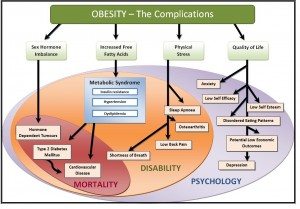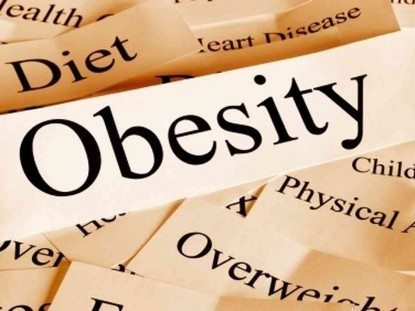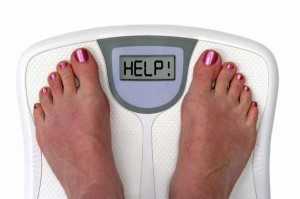Eating is something we all do every day throughout our lives. And there is no big mystery to what healthy eating looks like. Yet the rise in obesity continues to be a huge and growing problem in the United States. Two in every three Americans is overweight, and almost one in three qualifies for the definition of obese. In the past 30 years, obesity in kids has tripled.
This isn’t news; Americans know they’re overweight. In fact, we spend huge amounts of money on diet books and diet programs to hep us lose that burdensome extra weight. There are more than 30,000 fitness clubs in the United States, all aimed at serving the national desire to lose weight and be fit. And it’s not just a question of being a little too heavy or of how we look. Nutrition is one of the most significant factors in society’s major killers, like heart disease, cancer, and diabetes. Most of us are literally digging our graves with our teeth. And we know all this-yet clearly the majority of us aren’t doing anything about it. Why not?
Do you know anyone who would eat a quart of Crisco or a pound of butter a day? Does anyone say, “Hmm, my cholesterol is down to 239, I need to get it up over 400. There are still a few arteries flowing…better make sure I get those clogged, too”? Of course not. Then why do we act like we do?
You know what you’re supposed to eat. We all do. Fresh fruits and vegetables, complex carbs, salads, whole grains, lean meats, more fish and poultry and less beef…You know it, I know it, we all know it. So why do so many of us still go out and chow down cheeseburgers and fries every day?
I’ll tell you why: because it won’t kill us…not today.
Childhood obesity has more than doubled in children and quadrupled in adolescents in the past 30 years. The percentage of children aged 6–11 years in the United States who were obese increased from 7% in 1980 to nearly 18% in 2012. Similarly, the percentage of adolescents aged 12–19 years who were obese increased from 5% to nearly 21% over the same period. In 2012, more than one third of children and adolescents were overweight or obese.
Being overweight is defined as having excess body weight for a particular height from fat, muscle, bone, water, or a combination of these factors. Obesity is slightly different. Obesity is defined as having excess body fat. Overweight and obesity are the result of “caloric imbalance”—too few calories expended for the amount of calories consumed—and are affected by various genetic, behavioral, and environmental factors. Childhood obesity has both immediate and long-term effects on health and well-being.
Immediate health effects:
- Obese youth are more likely to have risk factors for cardiovascular disease, such as high cholesterol or high blood pressure. In a population-based sample of 5- to 17-year-olds, 70% of obese youth had at least one risk factor for cardiovascular disease.
- Obese adolescents are more likely to have pre-diabetes, a condition in which blood glucose levels indicate a high risk for development of diabetes.
- Children and adolescents who are obese are at greater risk for bone and joint problems, sleep apnea, and social and psychological problems such as stigmatization and poor self-esteem.
Long-term health effects:
- Children and adolescents who are obese are likely to be obese as adults and are therefore more at risk for adult health problems such as heart disease, type 2 diabetes, stroke, several types of cancer, and osteoarthritis. One study showed that children who became obese as early as age 2 were more likely to be obese as adults.
- Overweight and obesity are associated with increased risk for many types of cancer, including cancer of the breast, colon, endometrium, esophagus, kidney, pancreas, gall bladder, thyroid, ovary, cervix, and prostate, as well as multiple myeloma and Hodgkin’s lymphoma.
 Now how can we prevent obesity? Healthy lifestyle habits, including healthy eating and physical activity, can lower the risk of becoming obese and developing related diseases. The dietary and physical activity behaviors of children and adolescents are influenced by many sectors of society, including families, communities, schools, child care settings, medical care providers, faith-based institutions, government agencies, the media, and the food and beverage industries and entertainment industries. Schools play a particularly critical role as well by establishing a safe and supportive environment with policies and practices that support healthy behaviors. Schools also provide opportunities for students to learn about and practice healthy eating and physical activity behaviors.
Now how can we prevent obesity? Healthy lifestyle habits, including healthy eating and physical activity, can lower the risk of becoming obese and developing related diseases. The dietary and physical activity behaviors of children and adolescents are influenced by many sectors of society, including families, communities, schools, child care settings, medical care providers, faith-based institutions, government agencies, the media, and the food and beverage industries and entertainment industries. Schools play a particularly critical role as well by establishing a safe and supportive environment with policies and practices that support healthy behaviors. Schools also provide opportunities for students to learn about and practice healthy eating and physical activity behaviors.
The rise in obesity is very scary as it’s increasing quite rapidly. There is so much out there for convenience purposes that it’s just the easy way out to go through a drive through and get that burger and fries, or the taco and burrito combo. We as parents can put an end to this in our families. We are in control of what our children put into their bodies. We can either raise them up to learn a healthy lifestyle, or we can raise them up to have absolutely no care whatsoever…which they will pay for in the long run. Try this: When you’re out shopping for food, think for just a moment before you buy something…look at the ingredients first. Can you pronounce them? If not, why would you ingest them if you have NO CLUE what it is you’re about to put in your body? When purchasing food, think first, would you want your child to eat it? If not, then you shouldn’t either.
This is one HUGE reason I do what I do. I am a mom of 2 girls. I want to give them the best that I can in nutrition and exercise so that they can live healthy, happy, fulfilling lives. I have the control right now to make sure they learn good healthy eating habits. I’m sure you would want the same for your children as well. As parents, we always want what’s best for our kids.
So let’s start right now. Instead of ordering pizza tonight because you’re bored and don’t want to cook, maybe take the family out to Souplantation (more salad and kid friendly stuff there anyway…but watch your portions.) Or instead of going through that drive through at McDonald’s, grab some chicken at the grocery store and some brown rice and veggies to roast. Super easy and fast. It just takes some small, consistent changes to reap huge rewards.
Another tip for eating healthy is meal prepping. It’s a good habit to get into maybe on a Sunday or Monday and prepare foods for the week, i.e. cut veggies and salad fixings, prepare some grilled turkey or chicken to top on salads, etc. This is helpful in a sense that it takes out all the guesswork for food during the week, and there’s no excuse to go out and get a drive through because you already have it…so why spend the extra money?
Baby steps. I know you can do it. And I’m here to help if you don’t know where to start. Do this right for your family. Do it for you. Do it for your precious babies.


